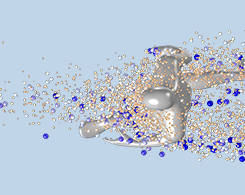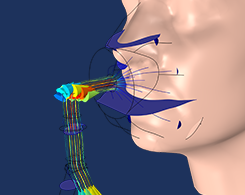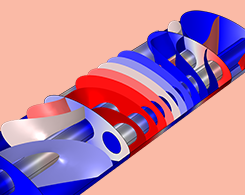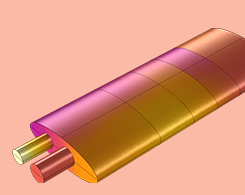Blog Posts Tagged Certified Consultants

Modeling Droplet Flow in an Open Space with COMSOL Multiphysics®
If you are jogging six feet apart from someone else, should you both be wearing masks? Simulation was used to analyze the motion of particles between two runners in an open space to find answers.

Optimizing an NIV Mask Design with Multiphysics Simulation
NIV masks offer a form of noninvasive monitoring and ventilation for COVID-19 patients, which lessens the need for ventilators and other mechanical respirators.

Optimizing Lubricated Systems with Numerical Simulation
Experts at SIMTEC designed a lubricated mechanical contact using numerical modeling and built an application for optimizing the use of lubrication in rolling and sliding bearings.

Paper Mechanics and the Benefits of Modeling Paperboard Formation
Get a quick introduction to paper mechanics before guest blogger Eric Linvill discusses modeling a L&W bending resistance test piece for cost-benefit analyses in paperboard production.

Modeling Phase Change in a Thermosiphon
A guest blogger from Noumenon Multiphysics writes about modeling phase change in a thermosiphon, a device that has been keeping houses warm since the 1800s.

Analyzing the Mechanical Behavior of Cells for Biological Applications
Finite element modeling can be used to analyze the mechanical behavior of biological cells. Guest blogger Björn Fallqvist of Lightness by Design sheds light on this bioengineering topic.

Evaluating the Effect of Shell Thickness on Muffler Performance
Guest blogger Linus Fagerberg from Lightness by Design follows up a previous post with a discussion of one design consideration for the radiated sound in a muffler design: shell thickness.

Predicting the Sound Emission of a Muffler Design via Simulation
Cars with subpar mufflers are annoyingly loud. Guest blogger Linus Fagerberg from Lightness by Design discusses a novel, simulation-based approach to predict noise generation in muffler designs.
